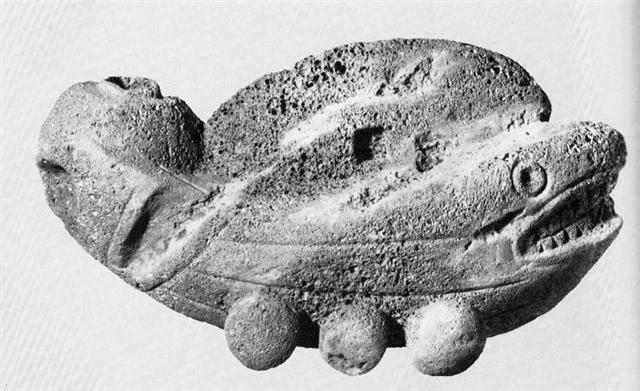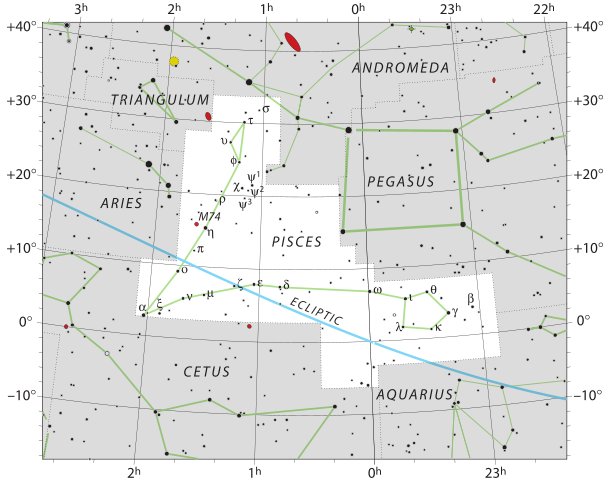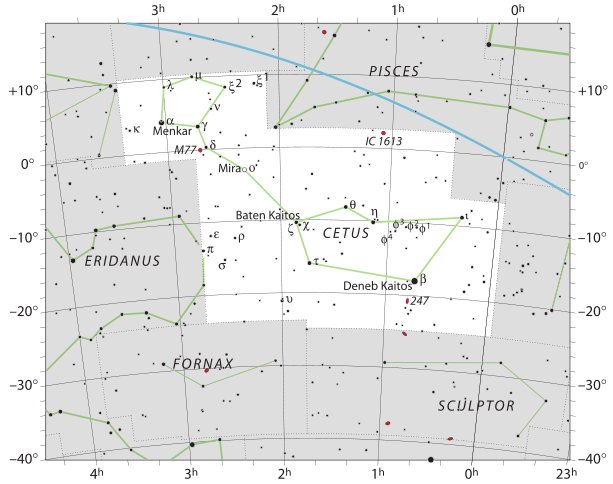3. The pentagonal form of the early fish reminds us of the pentagonal earth oven in the tail of the 'whale' (cfr at Deneb Kaitos):
... The image is that of a reed boat with a whale's or sea monster's head at the bow, and a skull-like mask at the stern. At the top of the stern is a five-sided umu, or Easter Island fireplace, and on deck is a hare paenga, or lenticular reed house, with a square doorway on the starboard side. On the same side, a wide channel surrounded by a V-shaped groove leads down from the deck aft ... ... The V-shaped groove could correspond to the V of Pisces (and possibly also allude to the V between Caph and Cih in Cassiopeia). V means Latin 5 (as in fire). The hare paega on the back presumably signifies the dark 'night' side, winter (and the habitat of the sea monster). His eyes (not her this time) are drawn with double rims - they are 'watery'. I think it is Sun who is going down below the 'surface', not the sea monster, it is atumn equinox and not spring equinox ... Heyerdahl says the V-shaped groove and the square doorway are only on the starboard (right) side. The square doorway ought to represent the exit hole for Sun at autumn equinox - into the dark interior - and therefore it cannot be depicted also on the left (Moon) side. Likewise is the V of Pisces only on one side of the sky roof, the side which north of the equator is the front side but which south of the equator is on the back side. The pentagonal form of the early fish has probably been consciously defined as such, we can see from the fact that the star β (Fum al Samakah) was avoided:
The pentagonal form in Cetus comes later, i.e. it could be an earlier version of the 'earth oven', no longer of any use because the new fire should be alighted at 'time zero':
Comparing the pentagon in Pisces with that in Cetus I guess someone in modern times could have destroyed the otherwise very similar shapes by erasing ν Ceti as a corner and prolonging the side to ξ². |


